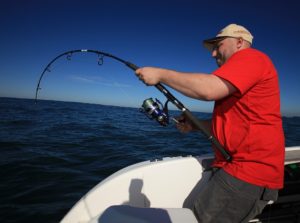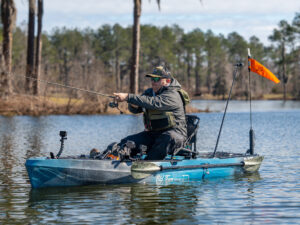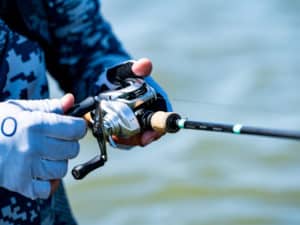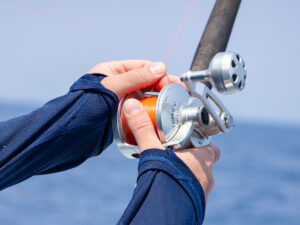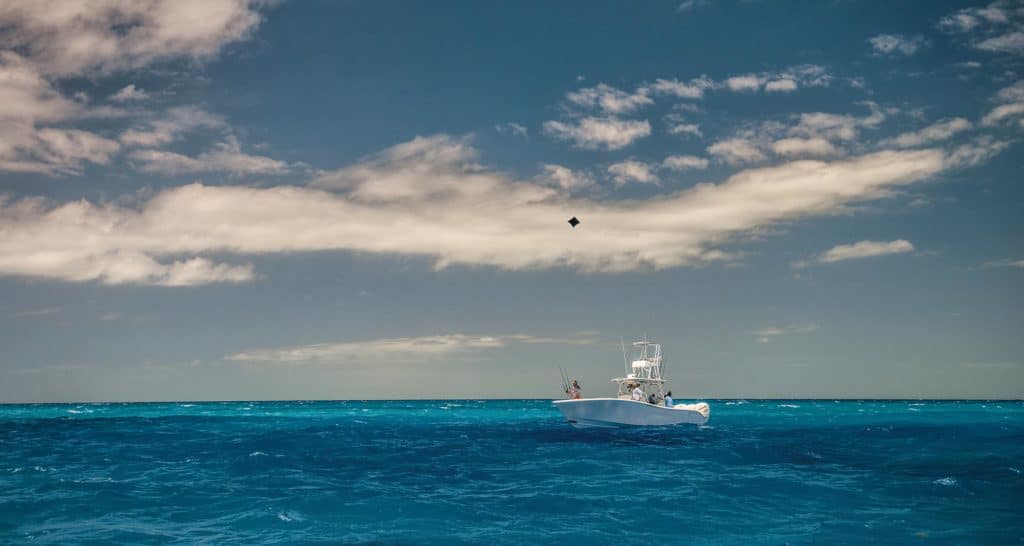
I’ll never forget my introduction to kite-fishing, some 20-plus years ago on a Contender 31 during the Yamaha Contender Miami Sportfish Tournament. Having traveled south from the mid-Atlantic for this event, I found kite-fishing both completely foreign and utterly fascinating. From the moment we arrived at the fishing grounds, the Contender’s crew sent multiple kites aloft and kept six live baits deployed at all times, even as an unsteady wind forced constant throttle jockeying, line adjustment, and spar changes.
Read Next: Rig Your Boat for Kite Fishing
To say the captain and crew worked like a carefully oiled machine would be like saying a Swiss watch works pretty well. This level of kite-fishing demanded the same level of professionalism needed to catch all four billfish in a quad hookup, and deploy a tournament-level trolling spread in three minutes flat. The crew delivered that day. And from what I saw, it was immediately evident that one of the most important tools they depended on were their kite reels.
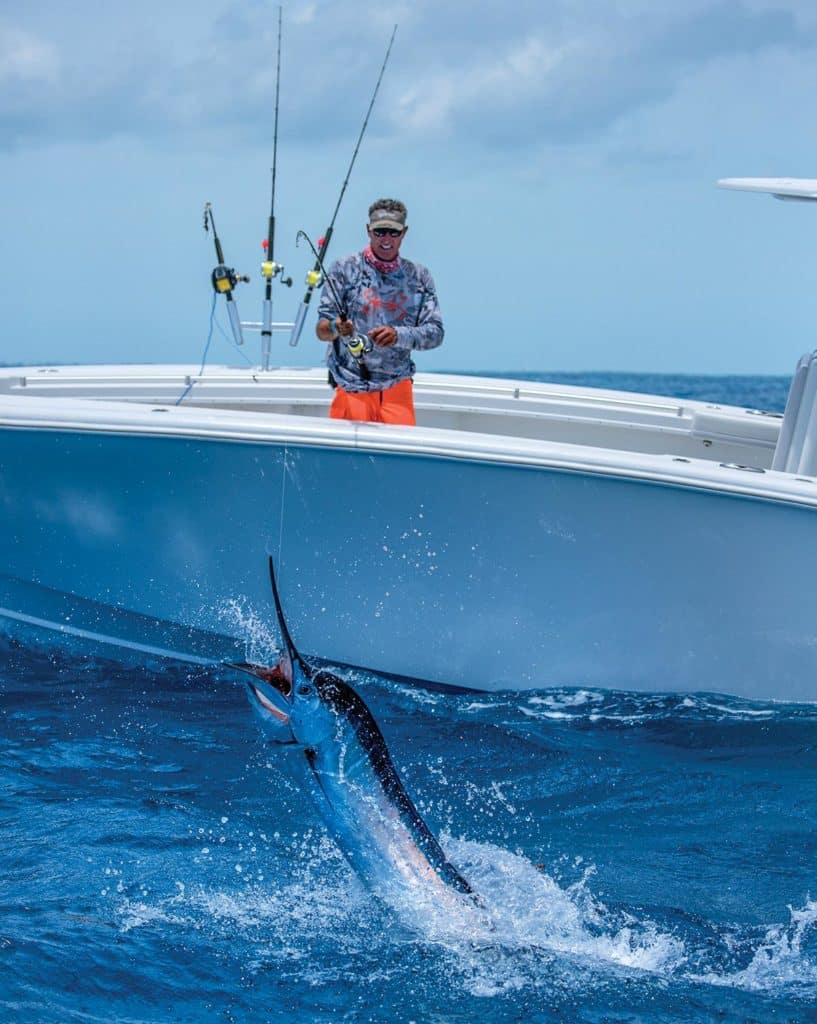
Making It Reel
It’s easy to break down kite reels into two different categories: electric and manual. But talk with any serious kite angler and you’ll quickly realize that to some degree, this is a false dichotomy. Manually cranked reels simply can’t keep up — literally — with the demands of fishing on a competitive level.
“Speed matters,” says Capt. Ray Rosher, who’s not only a recognized expert at kite-fishing but also builds and sells kite-fishing accessories through his company, R&R Tackle. “Whether I’m in a tournament situation or on a charter, every bite counts, and kite retrieval is very important. If I miss a bite or catch a fish quickly, and I need to reset on fish that are tailing south on a north wind, I need to get the kite line in fast and reset it — and that might mean winding in 300 to 400 feet of line. Or there might be a weather change — rain might be coming— and I need to get line in fast. Speed matters.”
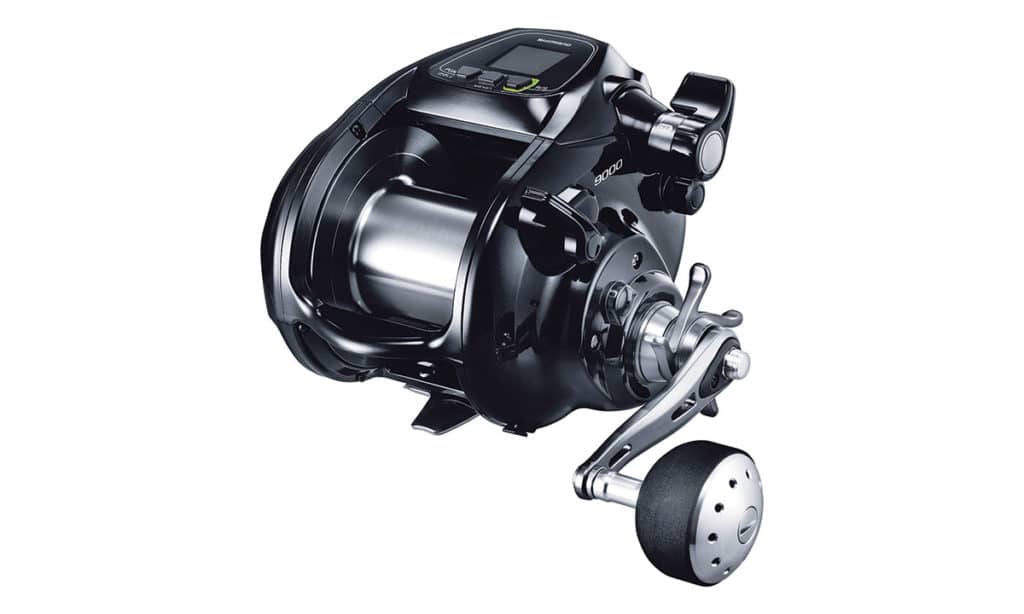
For serious anglers, this speed factor alone eliminates manual-crank reels from contention. Yes, many beginners who are trying to set up a basic, no-frills kite rig will clamp a Senator onto a homemade kite rod that began life as a 6-foot trolling stick before being broken off or sawed down. But even with a fairly fast reel, taking up 2.5 feet of line per crank at a sweat-inducing one crank per second, best-case-scenario retrieval speed is going to be around 150 feet per minute. That’s far less than most electric reels, and not even one-quarter the speed of some. After a few trips filled with frantic cranking, it doesn’t take long to realize that an electric reel is a necessity to properly run a kite spread.
“In all cases, it’s important to point out that open reels without levelwinds will allow you to run more clips,” Rosher continues. “The marks that stop the clips get larger and larger as you add additional clips, and larger marks sometimes have trouble passing through a levelwinder.”
| Kite Reels | Line Capacity (Braid) pound-test/yards | # Sizes/Models | Max Drag (pounds) | Max Speed (feet/minute) | Weight (pounds) | Price (MSRP) |
|---|---|---|---|---|---|---|
| Daiwa Marine Power MP 3000 *** | 120/1500 | 1 | 88 | 279-328 | 12.2 | $3,499-$3,999 |
| Daiwa Tanacom | 100/440-100/660 | 2 | 48 | 426-459 | 2.8-3.3 | $549-$599 |
| Daiwa Seaborg | 100/550-100/850 | 2 | 72.8 | 509-541 | 3.9-4.4 | $1,599-$1,699 |
| Dolphin Electreel Penn * | 50/475-130/1000 | 9 | 21 | 250-350 | 2.8-11.0 | $700-$3,500 |
| Dolphin Electreel Shimano* | 50/600-130/1000 | 3 | 28 -79 | 350 | 5.2-10.9 | $2,100-$3,500 |
| Electra-Mate Sportsman** | Varies by reel used | 5 | Varies by reel | 321 | 6.0 | $270-$550 |
| Electra-Mate XP ** | Varies by reel used | 9 | Varies by reel | 508 | 9.0 | $460-$740 |
| Hooker Electric Penn * | 80/700-100/700 | 2 | 40 | 800 | 12.8-14.8 | $1,375-$1,975 |
| Hooker Electric Shimano * | 80/525-80/770 | 2 | 36-40 | 800 | 10.0-11.0 | $1,375-$1,974 |
| Kristal Fishing 600 Series | 80/3000-200/4500 | 8 | 90-140 | 280-420 | 6.0-25.0 | $1,500-$3,499 |
| Lindgren-Pitman*** | 200/1200-80/2500 | 2 | 60-150-plus | 500-750 | 25.0 | $4,995-$8,750 |
| Precision Auto Reels** | Varies by reel used | 4 | Varies by reel | 60-72 | 5.3-5.8 | $399-$560 |
| Shimano Forcemaster FM6000 | 80/720-80/1030 | 2 | 55 | 444-459 | 3.0-3.3 | $1,100 |
| Shimano Beastmaster 9000 | 100/940 | 1 | 55 | 540 | 3.3 | $1,700 |
*Frame integrates reel, which is included or is sold in kit form
**Frame attaches to a conventional reel’s exterior
***12- and 24-volt models
Beyond that, Rosher points out that there’s a wide range of electric kite reels, and there’s a purpose for all of them. Exterior bolt-ons are sometimes noisy or slow, but they’re easy to use and inexpensive. Reels designed for deep-dropping might not be the best when used for kite-fishing but can certainly be repurposed for it. A Hooker electric on a Penn 30VSW is what Rosher uses. This can pack on both an 80-pound mono for heavy-wind conditions and an 80-pound braid line for lighter-wind conditions, simultaneously. It can handle any wind conditions and run four clips.
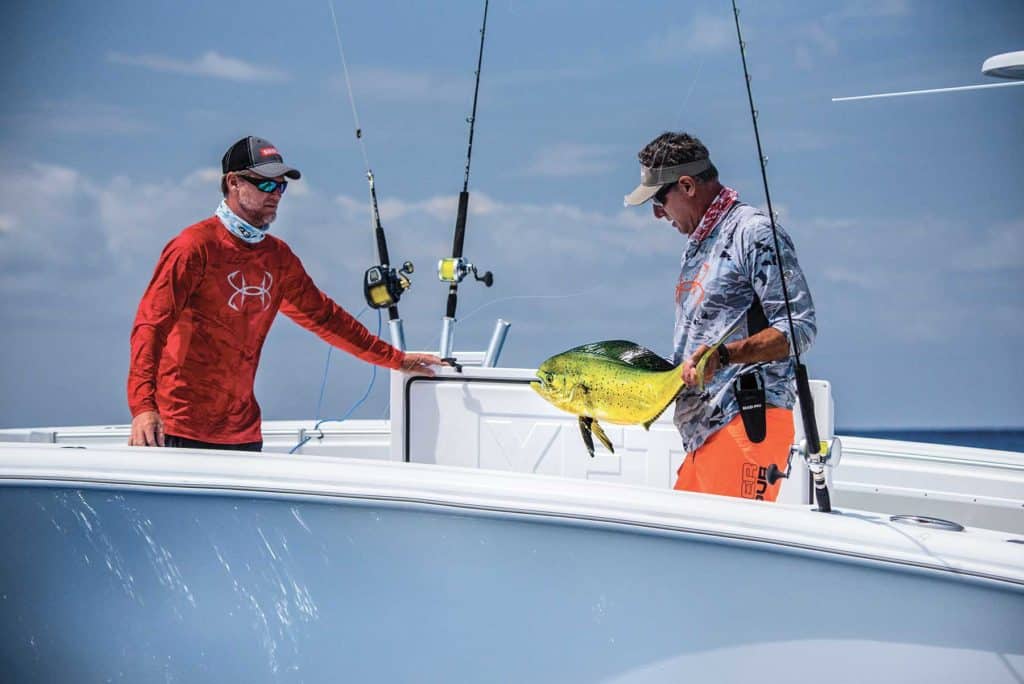
If the Shoe Fits
Keith Fraser, president of alltackle.com, notes that a certain genre of electric kite reel seems to be currently dominating the market. “There’s a huge demand right now for electric reels and kite-fishing kits with reels that you might call light-duty, but they’re inexpensive and programmable,” he says. “You can set and reset your kites to the same distances, bring them in at a press of the button, and keep things consistent and metered.”
Fraser says that particularly in South Florida, the reels that offer this mix of programmability and low cost — such as the base Daiwa models and to a lesser degree the Shimanos — are in the greatest demand. Many of these are also being used on the West Coast, where kite-fishing saw something of a boom in recent seasons thanks to excellent runs of bluefin tuna, often targeted by skipping Yummee lures from kites pulled at a modest trolling speed. But Fraser also says that as you move northward up the East Coast, while more and more people are gearing up for kite-fishing, they show a different preference. Here, many opt for multiuse reels like the Kristal, which might not be ideal for kite-fishing, but have more pulling power and can be used not only for kites but also for towing dredges and deep-dropping.
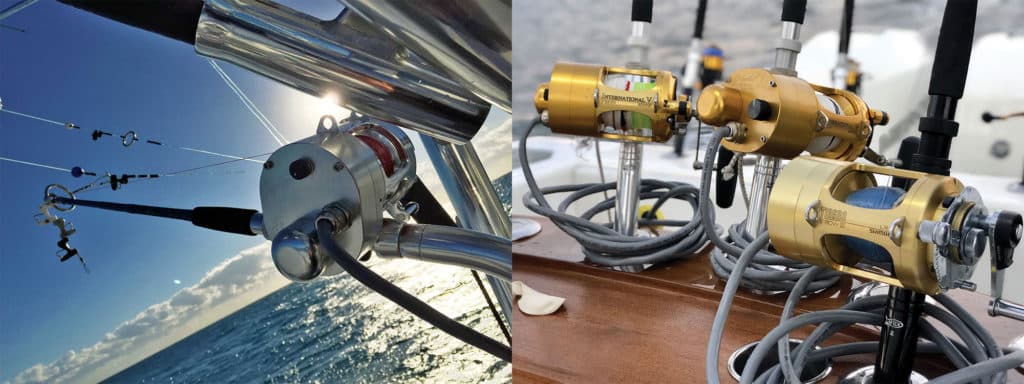
“For many people, it really boils down to budget,” Fraser says. “You do have guys who get a Senator 114H, spend $150 on a cheap rod and kite, and they can go kite-fishing. More-serious anglers will want the Kristals, Daiwas and Shimanos. Professionals are at a different level, and they’re willing to spend the money on faster, heavier-duty reels like the Hookers. Then, at the far end of the spectrum, you have your anglers without budget constraints — they want the top-end reels, and they always get them in pairs so they always have spares.”
Read Next: Choose the Best Fishing Kite for Tough Weather Conditions
Whichever kite reel might seem best for your needs, both Fraser and Rosher caution against overreaching. They agree that beginners should keep it simple at first. Kite-fishing can get very complex very quickly, and it does require experience and knowledge or that well-oiled machine will look more like a Rube Goldberg. As Rosher puts it: “Focus on keeping it fun. Go slow, and enjoy the journey.”

